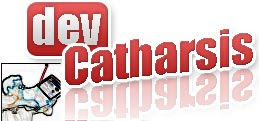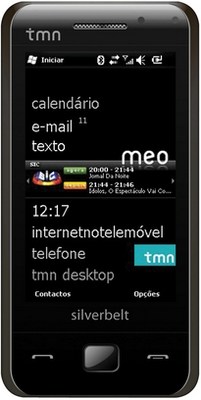I’ve been accompanying a series of M.Sc. around RFID. Last Friday Nuno Rodrigues defended his thesis on “Integrating RFID in the supply-chain supported over ERP”.
Here’s the abstract:
The field of logistics and distribution, in what concerns warehouse management, has clear needs of business process optimization regarding the reception and shipping of products. The Radio Frequency Identification (RFID) might be the solution to address those needs.
This document presents the study done regarding RFID technology, the emerging set of standards from EPCglobal, available RFID Middleware tools, analysis of the current business processes (typically supported by barcode technology) and a proposal of new business processes that explores the potential of RFID technology.
It is proposed an architecture for the implementation of an RFID system integrated with an ERP, which usually manage the warehouse, as well the integration with the suppliers and customers, in order to facilitate the exchange of important business information.
On this dissertation, Nuno tackled the problem of inefficiencies on the supply chain (high human intervention, high error rates and lack of item-level tracking), and how RFID can help addressing this problems.
His dissertation starts making reference to the state-of-the-art, where is worth mentioning the comparison of platforms and their alignment with the EPCGlobal stack.
He devotes the next chapter to the business processes on a warehouse, defining both the AS-IS and the necessarily different TO-BE resulting upon the RFID re-engineering process. The scenario is a typical Order->Palletize->ASN->Ship->Receive Goods process, with all the usual electronic documents. As an extra challenge Nuno had to extend Dynamics NAV in order to support RFID,
The next chapters identifies the involved information entities, the solution architecture and the prototype implementation detail, concluding demonstrating that the integration of RFID addresses the identified problems.
The scenarios and architecture will be addressed on a future post. For now let me list the technologies:
- BizTalk Server as Integration Middleware
- BizTalk RFID as RFID MiddleWare
- Dynamics NAV as ERP
Congratulations for a great thesis, Nuno.







 This project co-financed by the QREN (National Strategic Reference Framework), the framing for the application of the Community’s policy for economic and social cohesion in Portugal.
This project co-financed by the QREN (National Strategic Reference Framework), the framing for the application of the Community’s policy for economic and social cohesion in Portugal.


![c2bcd84f[1] c2bcd84f[1]](https://blogger.googleusercontent.com/img/b/R29vZ2xl/AVvXsEj311WW2rMNMuxnSslh0xbtLawL-FWJ0R2NVt92ouySU9RoGPHCCbYiW02ksA8ZnUdxdfQYC-IBoK6m1VU-Orl5xLJcKKvCzPMlWqdUcRLKXrhUpTgPSNiSak6rC1fSz6sPmcvp/?imgmax=800)
![caravela2[1] caravela2[1]](https://blogger.googleusercontent.com/img/b/R29vZ2xl/AVvXsEiHA4j9iQhfltOIBx0x2DF_4IuT-X_oFh3leTbvI-jO3xvOIuC4SvKEUE1Ly-pMFkHCcigRCyiAhlMtiRo99xOvd_HMVGi8_VQ5XqMsAubN-qA2DzPLZ8kuvpr8v5ei9YH-AxA2/?imgmax=800)
